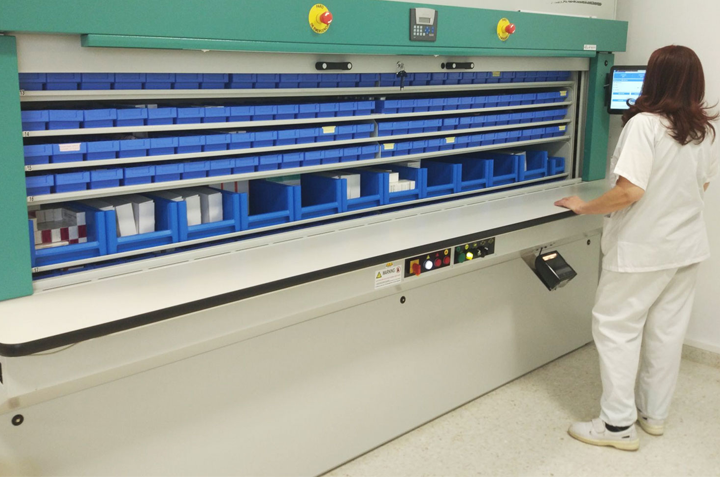Benefits for small hospitals: leveraging automation to maximize efficiency

Benefits for small hospitals: leveraging automation to maximize efficiency
In 2020, small hospitals worldwide have had to adjust their daily operations to address safety precautions, declining hospital admissions, and more, leaving many in search of new approaches to reduce costs and increase efficiency.
In an era filled with new technologies, there are ample opportunities for hospital pharmacies to leverage automation that can bring significant benefits, all while reducing operating costs. Given the current pressure for hospitals to find ways to cut spending, and the fact that many hospitals with 100 to 400 beds are still manually dispensing their medications per unit, automated medication dispensers can transform the way hospitals operate and can be the ticket to significant cost savings.

Investing in hospital technology can mean future cost savings
The first step to identifying cost-saving opportunities is to review a pharmacy’s current processes and determine where new operations and technology can be applied. For hospitals currently manually packaging unit doses, automation can reduce labor time and packaging costs.
Depending on the size, small hospitals generally purchase ~70% of medications before unit dosing, but significant cost savings can be achieved if a pharmacy decides to buy some medications in bulk and create their own unit doses. Some medications to look for cost savings include aripiprazole, paliperidone, and oxycodone. Once a hospital invests in a medication packaging machine, it can evaluate its current medication costs and look for opportunities to package its own medications into unit doses instead of purchasing unit dose packages that tend to add additional costs.
Positive ROI
When seeking cost-saving opportunities for any business, most of the time a facility will need to incur a capital expense to see a return. With hospital automation, although there is an initial cost for hardware, the added value is laden with benefits. Most pharmacies can show a positive ROI in the first year of purchasing or leasing a new unit dose packaging machine. Many hospitals have the potential to show a return on investment in just the first month due to cost savings of $0.04 – $0.05 per package compared to manual unit dose supplies.
Automated medication packaging machines not only offer cost savings but can also significantly reduce the labor time required to manually package medications. With the current COVID-19 pandemic, staffing has been a challenge for many pharmacies due to personnel shortages. By investing in automated machinery such as a tabletop unit dose packaging machine, hospitals can operate at the same pace without having to worry about staffing challenges.
Since a tabletop unit dose packaging machine can package at speeds of 60-120 packages per minute, by utilizing this automated machinery, facilities can see a significant decrease by eliminating the manual packaging process. Some hospitals even report they can reduce up to half a full-time employee (FTE) by investing in a machine. By shifting from manual packaging to automation, hospitals can eliminate repetitive tasks, gain efficiency, and reduce packaging costs.
Improved organization with hospital automation
When it comes to large quantities of medications, it can be difficult to find a way to store and organize medications that seamlessly work with a facility’s operations. However, many hospitals prefer flexible packaging material that aligns with a tabletop machine. Flexible packaging material is easier to open and more medications can be stored in an automated dispensing cabinet (ADC) compared to blister-packed manual unit dose packaging. Therefore, not only are there opportunities to show a quick ROI, the packaging material and storage methods are most preferred.
Future of hospital automation and robotics
What impact will pharmaceutical automation have on the future of small hospitals? With increasingly efficient advanced technologies and automated equipment, small hospitals cannot afford not to automate. As hospital pharmacies seek potential partners to automate, it is beneficial to look for those who can meet all their packaging needs, including unit dosing, multi-dose packaging, packaging for oral and liquid medications, medication carts, pneumatic tubes, medication cabinets with RFID, hospital bracelets, among others.
As automated equipment becomes more efficient and provides significant benefits, smaller hospitals and their pharmacists are quickly learning that automation is the next step to managing a healthcare facility that can smoothly withstand any unforeseen situation.


